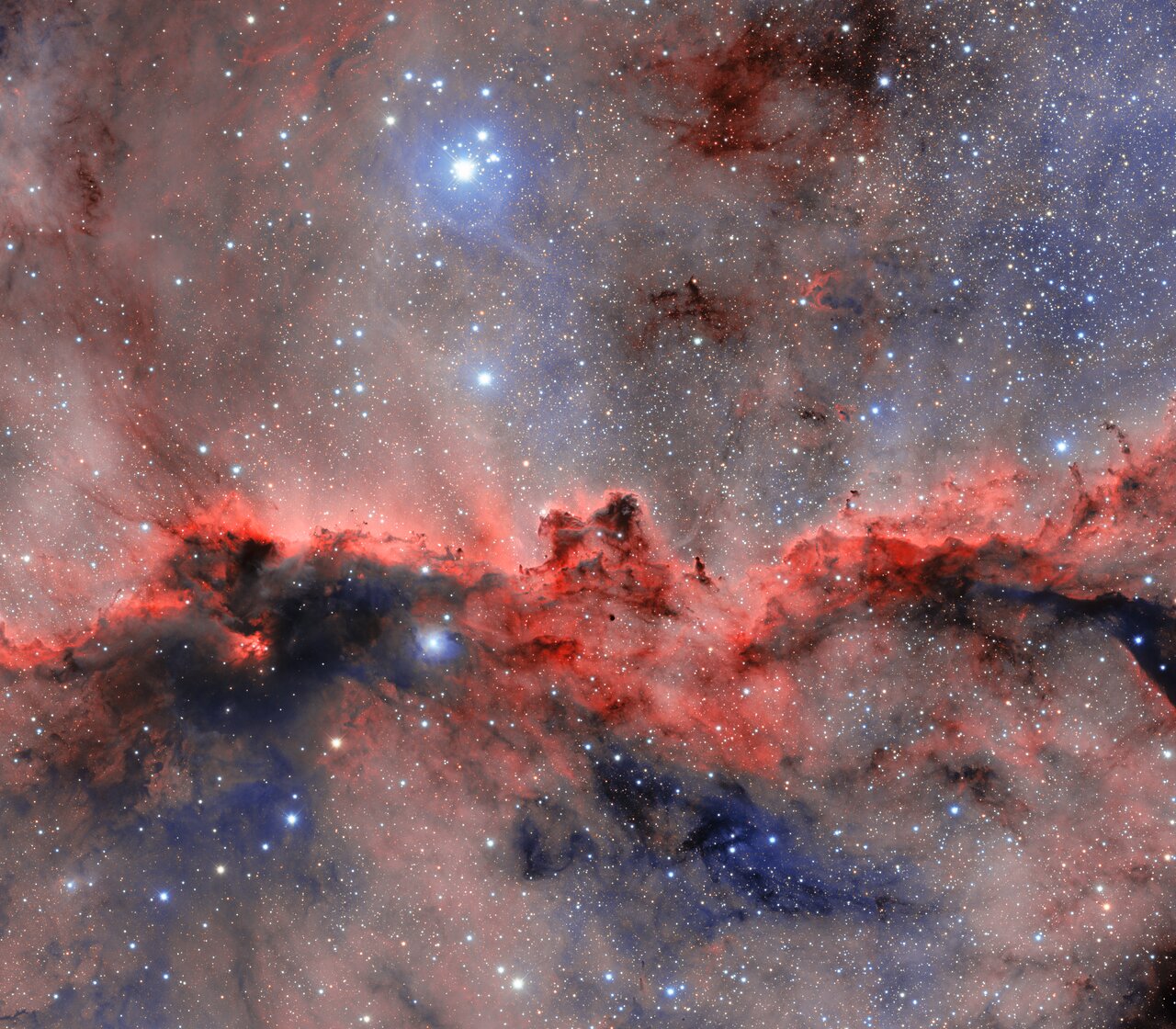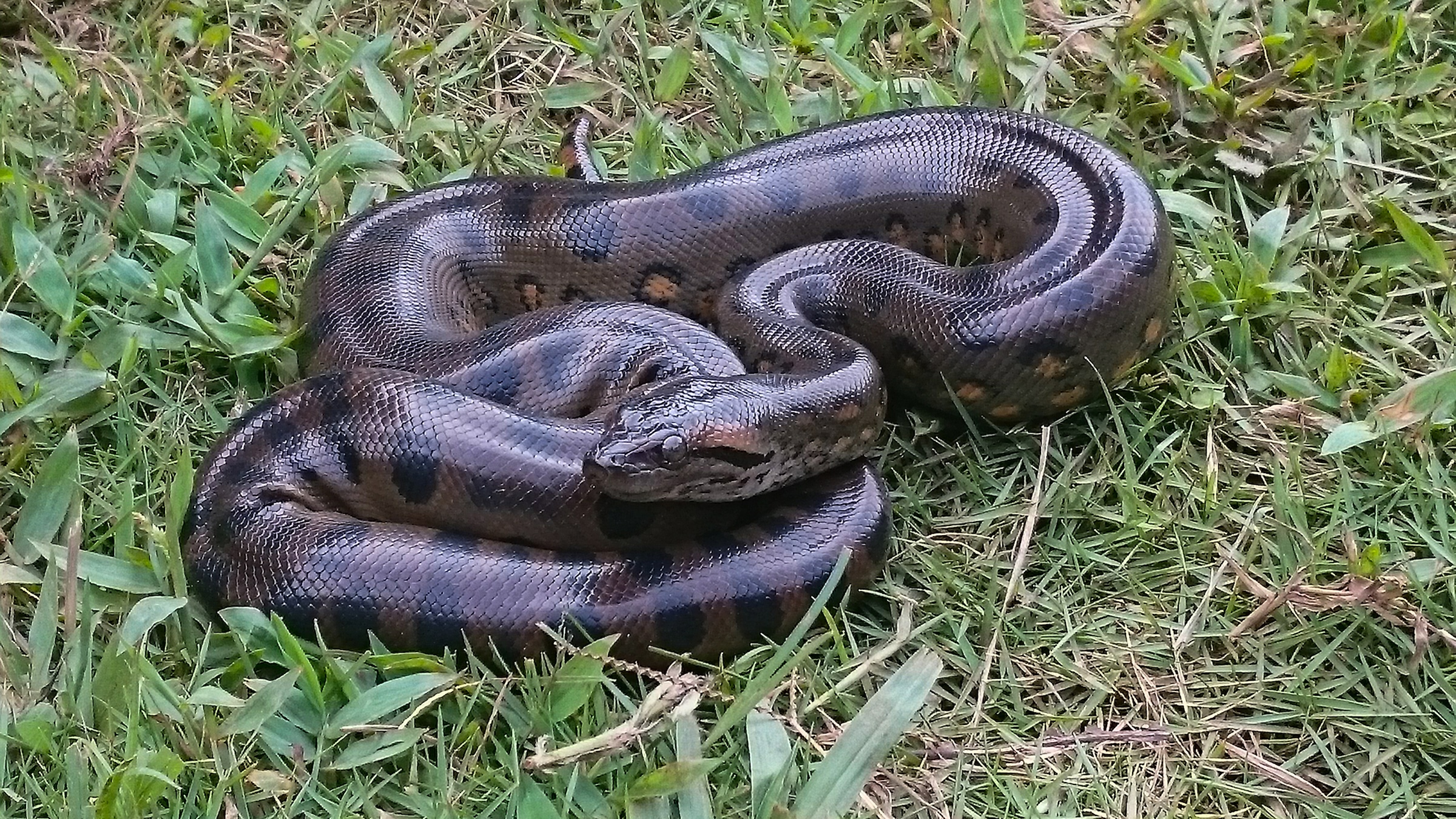'Fighting dragons' light up little-known constellation in the Southern sky: Space photo of the week
A nebula where young stars sculpt dragon-like forms has been imaged in colorful detail by the Dark Energy Camera in Chile.

What it is: NGC 6188, also known as the Fighting Dragons of Ara or the Firebird Nebula
Where it is: 4,000 light-years away, in the constellation Ara ("the altar")
When it was shared: July 9, 2025
From a cat's paw to a cosmic tadpole, humans love to see figures of animals in the night sky — but the "'Fighting Dragons of Ara" has to be one of the most dramatic. Astronomers using the Dark Energy Camera (DECam) in Chile have unveiled a mesmerizing new image that evokes a mythical duel of two celestial beasts.
The striking image appears to show two dragon heads emerging from dense clouds of cosmic dust, seemingly locked in an eternal standoff. Their glowing, sinuous forms are shaped by powerful stellar winds emitted from bright young stars born within the nebula, most of which are only a few million years old.
The mesmerizing shapes created by the interplay of radiation and dust are officially known as NGC 6188. It's an emission nebula, which forms when the intense radiation of stars energizes gas, causing it to emit light, according to NASA. It's in the little-known constellation Ara and is observable only from the Southern Hemisphere, where it's found just under the tail of Scorpius, "the scorpion." NGC 6188 is close to the edge of a massive molecular cloud, where stars form.
Related: 42 jaw-dropping James Webb Space Telescope images
The red in NGC 6188 comes from ionized hydrogen being illuminated by 27 very bright stars, which are barely a few million years old — newborns, on a cosmic scale — giving the image incredible depth. Ultraviolet radiation in the stellar winds coming from these stars have ignited, sculpted and shaped the gas and dust into the dragons' heads. According to NASA, this ultraviolet radiation floods the gas with so much energy that it strips electrons from the hydrogen atoms in the nebula. This is called ionization. As the atoms recombine, they emit energy in the form of photons, which makes the nebula's gas glow.
DECam is mounted on the Victor M. Blanco 4-meter Telescope at the U.S. National Science Foundation's Cerro Tololo Inter-American Observatory in Chile.
For more sublime space images, check out our Space Photo of the Week archives.
Get the world’s most fascinating discoveries delivered straight to your inbox.

Jamie Carter is a freelance journalist and regular Live Science contributor based in Cardiff, U.K. He is the author of A Stargazing Program For Beginners and lectures on astronomy and the natural world. Jamie regularly writes for Space.com, TechRadar.com, Forbes Science, BBC Wildlife magazine and Scientific American, and many others. He edits WhenIsTheNextEclipse.com.
You must confirm your public display name before commenting
Please logout and then login again, you will then be prompted to enter your display name.
